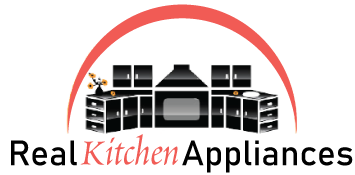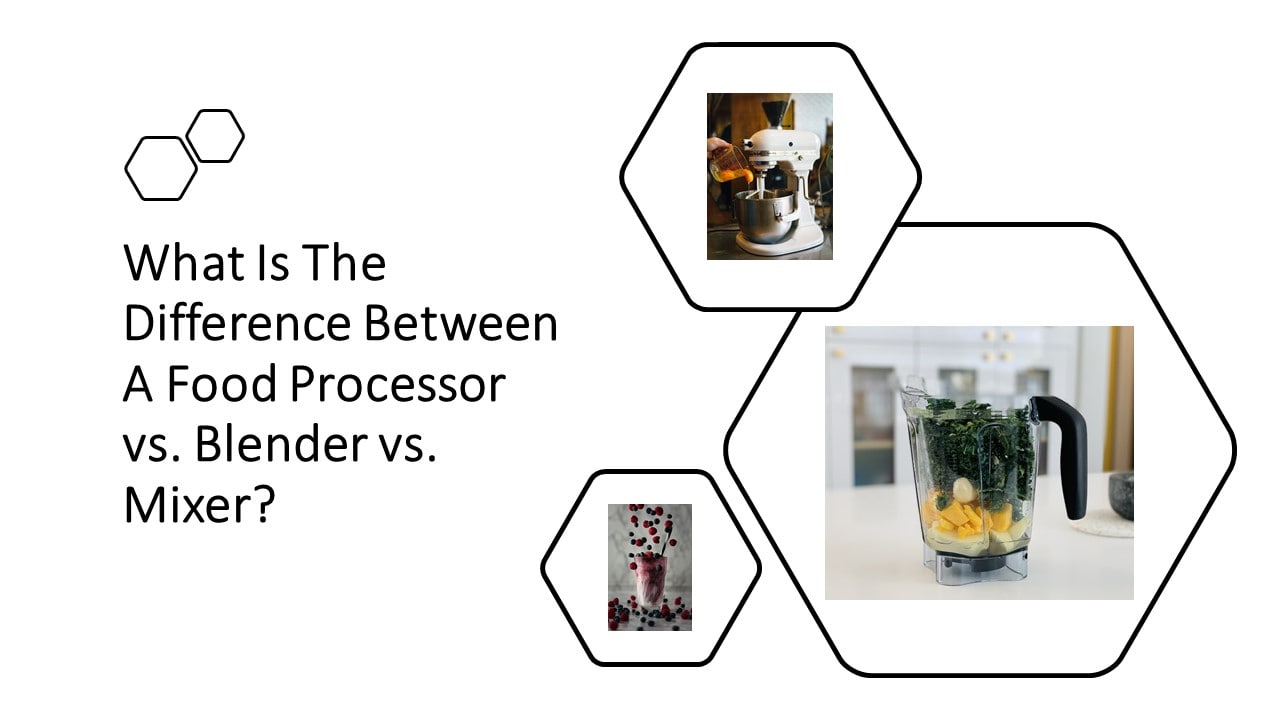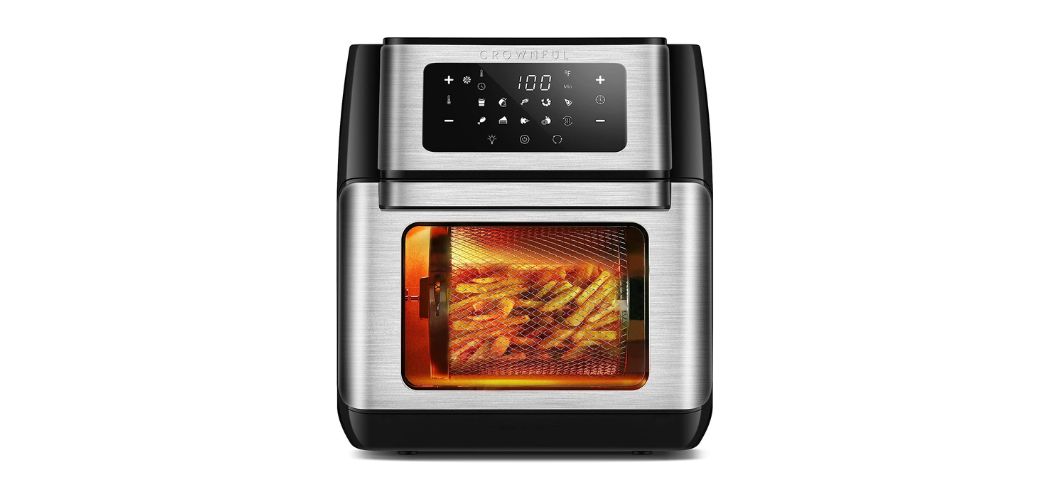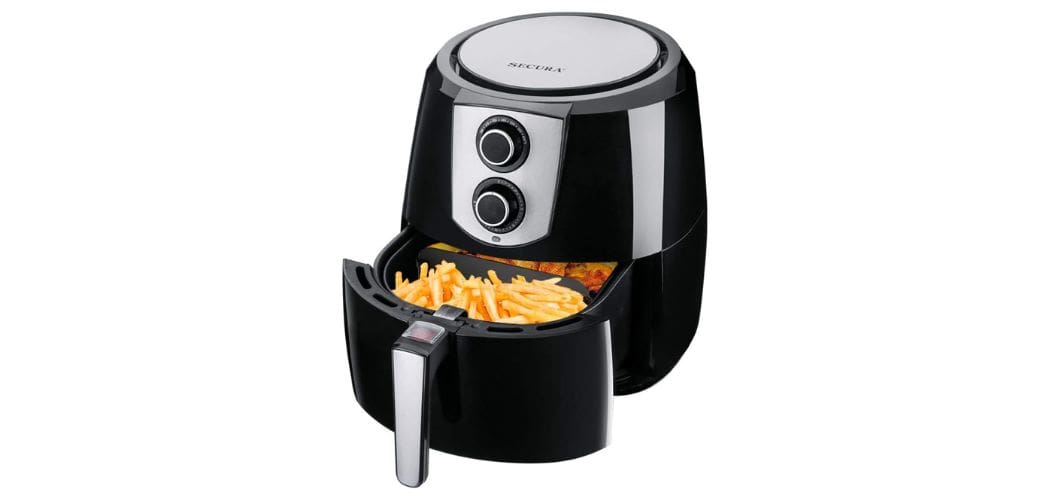Over time, working and cooking in the kitchen has become a simple task due to technology that continues developing kitchen appliances that will make lives easier.
From a kitchen chimney to a juicer mixer grinder, every appliance reduces daily kitchen work pressure to a large extent.
Cooking food during the present time has become an art, and with the help of electronic devices, it has become easy as well. The most common kitchen appliances that every cooking enthusiast needs are a food processor, blender, and mixer.
Are you wondering how they are different from each other? Or which one should you invest in? These three appliances differ significantly in the tasks they can perform.
Food processors can pulverise and combine wet or dry ingredients. Mixers work at whisking, folding, and beating food ingredients to offer you the best results. Blenders are for mixing as well as grinding the ingredients together. Dive right in to know more about them.
Table of Contents
What Is A Food Processor?
The food processor is the master of all kitchen appliances as it has to meet all the cooking needs. They come with multiple changeable accessories like blades and discs, which makes them a multitasking appliance.
It takes very little or no water to make the processor work. It can help with chopping & slicing vegetables, grating vegetables or cheese, kneading doughs, mixing ingredients, and making puree. A processor can make time-consuming tasks like slicing easy and quick.
If you’re someone who likes making everything from scratch but doesn’t have much time, you can invest in a food processor. You can just set them up once in your kitchen and have an effortless cooking experience.
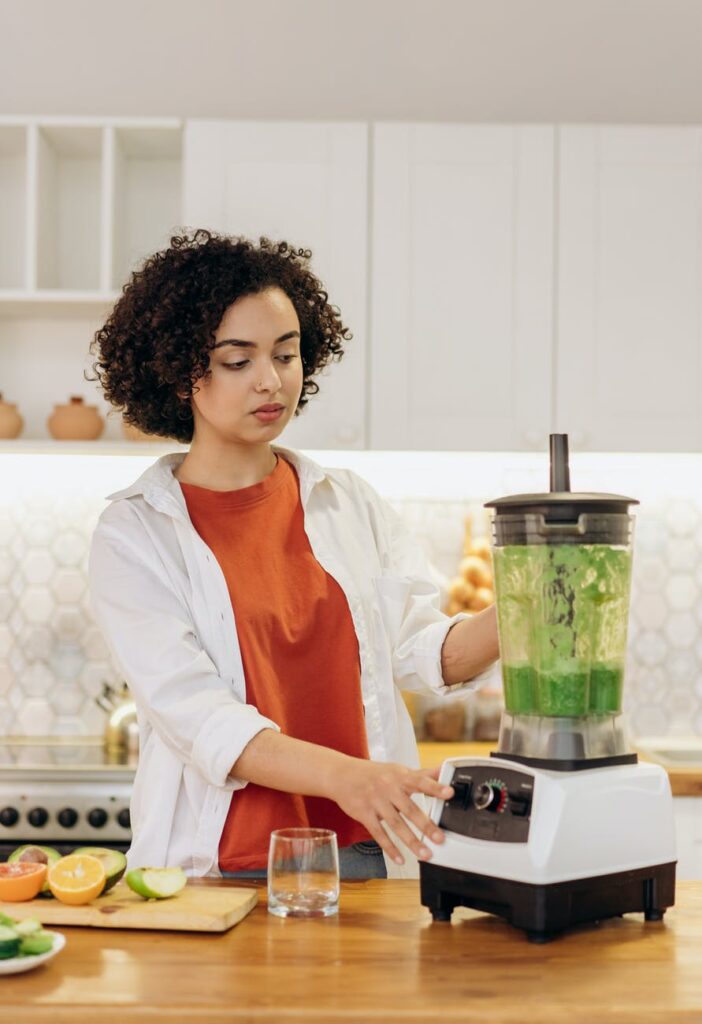
What Is A Blender?
Are you fond of smoothies, pureed soups, or slushy cocktails and want to make them at home?
Make sure to incorporate a blender in your kitchen appliances.
A blender is a simple and compact device that has an electric motor that powers up the metal blade located in the centre.
It can instantly blend the ingredients to give you a smooth consistency for everything from soups to smoothies and even dry ingredients.
Some top-end blenders also come with additional blades that can assist with grinding coffee or nuts.
You can find these three different types of blenders:
Countertop Blender:
The most common type of blender used in households is a countertop blender. It features a base that contains the motor, a tall pitcher or jar, and a lid. They offer different speed settings for blending, mixing, chopping, and other functions.
Immersion Blender:
An immersion blender, also popularly called a hand blender or stick blender enables you to mix ingredients in a cup or a bowl.
Since they don’t come with a pitcher, you can blend as per your needs. It is much more compact and easy to manoeuvre and clean than a countertop one.
Personal Blender:
Personal blenders are new appliances ideal for making your morning smoothies. Although they are not as versatile or powerful as other blenders, they are perfect for making single servings. In case you just want to blend small quantities, you can opt for a personal blender.
What Is A Mixer?
A mixer is an essential kitchen appliance that uses a gear-driven mechanism to rotate a pair of beaters in a bowl containing the liquids or foods prepared by mixing them. Mixers can help automate repetitive tasks like mixing and folding ingredients.
There are three major types of mixers, and they are:
Hand Mixers
The most simple mixer is the hand mixer, which is ideal if you have a small kitchen and are short on space or time.
They are not only very lightweight, but also quite portable and easy to store. A hand mixer comes with a handle, different speed settings, and a beater that helps with whisking, mixing, and kneading.
Given their simple design, their maintenance and cleaning process is very simple. They are ideal for occasional bakers.
Stand Mixers
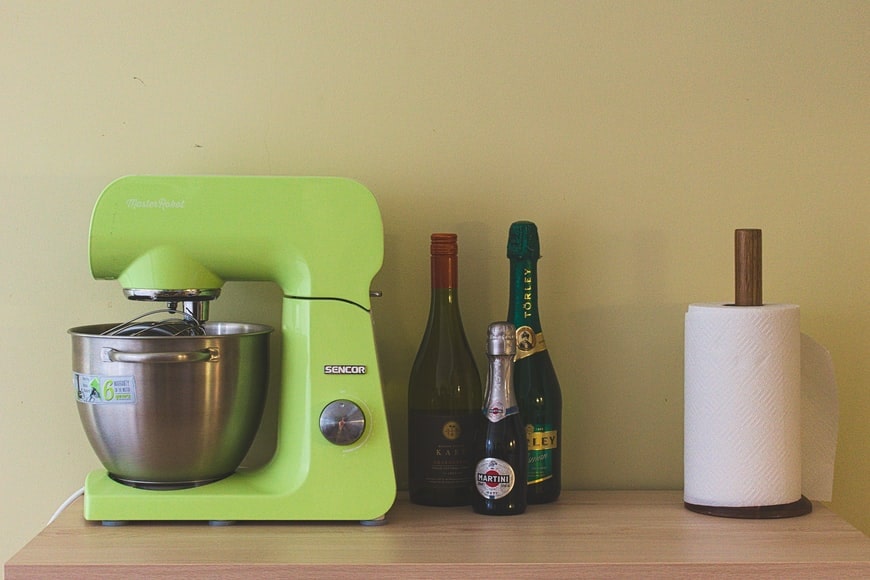
For frequent and more extensive baking needs, a stand mixer is much more suited.
It consists of an electric mixer with a large bowl that can allow the mixing of more ingredients at once.
You can get numerous speed settings and a more powerful motor with a stand mixer.
Hand/Stand Mixer:
As the name suggests, it is the perfect blend of a hand and a stand mixer. You can effortlessly convert the stand mixer into a hand mixer by just pressing one button. It allows you to use the mixer as per your needs and convenience to get the best results.
Quick Comparison Guide:
| Basis | Food Processor | Blender | Mixer |
| Purpose | It can chop, blend, churn cream, crush, emulsify, whip, and even cook. | Beneficial for pureeing, blending, and making smoothies | Mixers can help in baking by folding, beating and mixing ingredients. |
| Shape | Have broad, flat blades and discs to achieve specific cuts. | Tall sides assist in containing liquid recipes as they blend. | Have a beater immersed in the container that houses a motor. |
| Blades | Food processors have multiple blades and discs. | Traditional blenders feature one blade at the bottom of the jar. | Mixers do not have blades but have a beater. |
| Material | Made of unbreakable fibre or plastic bowls | Glass or stainless steel goes into making blenders. | Mixers are made from glass or stainless steel. |
Food Processor vs. Blender vs. Mixer – Know The Difference:
Let’s take a quick glimpse at some differences between a food processor, blender, and mixer:
Purpose
A food processor can handle chopping, cutting, and mixing. It is not merely a multi-purpose appliance but also helps save time when you do these separate tasks.
The food processor is helpful for anyone trying to get fit as it can prepare healthy dishes conveniently.
On the other hand, blenders have a large capacity. The durable appliances can chop, blend, churn cream, crush, emulsify, whip, and even cook.
A hand mixer is a small and portable appliance compared to the rest. It helps in mixing, folding, and beating ingredients, particularly for baking. The hand mixer consumes significantly less energy as it comes with a small and powerful motor.
Shape
Food processors tend to have wide bowls, which are convenient and easy to use. Wider bowls offer practical usage to process the larger ingredients.
A wider work bowl offers the appliance space to process whole or more significant ingredients such as healthy sweet potatoes or cucumbers.
A blender is a tall pitcher-like structure with tall sides that assist in mixing and juicing the ingredients.
The height and the shape also keep the ingredients circulating throughout the jar, and blades provide even mixing. It usually has a handle and pouring or bevelled edges.
Modern mixers consist of a beater immersed in a variety of containers. They can help in folding and blending as the beater rotates at a very high speed.
Blades
Many food processors have several blades and attachments for mixing, chopping, and pureeing the ingredients. Each blade has a specific function and ensures that the appliance can perform numerous tasks.
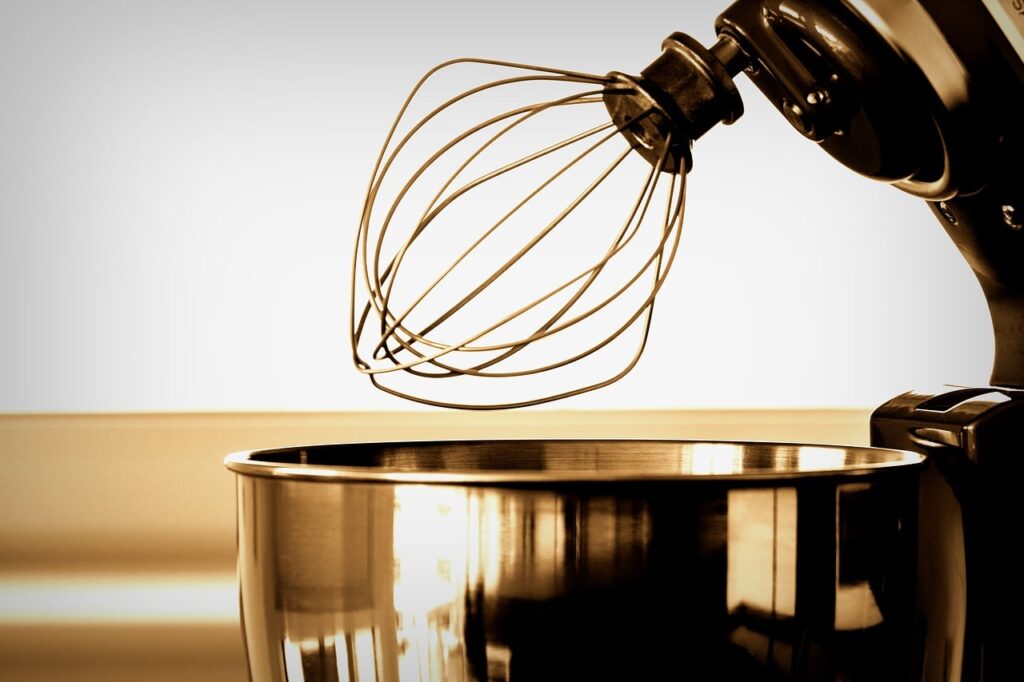
Traditional blenders have one blender fixed at the bottom.
This blade can feature several points at various angles, which helps blend the ingredients thoroughly.
The single blade can be perfect for everything from crushing ice to blending fruits and vegetables together into a smooth consistency.
Mixers do not have any blades. Instead, they have beaters in the middle to mix all the ingredients well enough.
Material
Manufacturers use unbreakable fibres or plastic to create the structure and bowls of a food processor.
Most of the blenders consist of stainless steel and glass, while mixers are made of stainless steel. Other materials which might be used are aluminium, steel, or thermoplastic.
FAQs
Can I Put Hot Ingredients In A Food Processor?
No, you must never add hot ingredients to your food processor. Make sure the liquids lower down to room temperature before processing it in the kitchen appliance.
I Have A Food Processor. Do I Require A Blender?
The answer here depends majorly on your requirements. While blenders are best suited for liquids like smoothies and soups, a food processor can better take care of solid food processing like slicing and chopping.
In case you need to make more smoothies and purees, you will require a blender.
How Do You Take Care Of A Blender?
Blenders are amongst the most manageable appliances to clean and take care of. You can wash the containers, blades, and lids through a dishwasher. Also, an important thing to keep in mind here is that you cannot expose the base to water and always clean it with a damp cloth.
What Recipes Can Be Made With A Hand Mixer?
A hand mixer is a versatile and necessary kitchen appliance for those interested in baking. You can use it for recipes that involve dough and batter mixtures. Besides that, you can beat eggs and mash potatoes with a mixer.
What Tasks Can A Food Processor Perform That A Blender Cannot?
Blenders come with only one blade, but food processors have numerous blades, each suited for a specific task. Owing to it, food processors can perform numerous tasks like chopping, slicing, grating, shredding, and even mixing, but a blender can only mix ingredients.
The Verdict
While there are numerous appliances available today, a well-equipped kitchen tends to have a blender, mixer, and food processor. All three perform a different set of functions but end up making cooking much easier.
In case you’re looking for a kitchen appliance that can help you in processing large ingredients, then a food processor will be suitable for you. But if you need help with mixing ingredients for everyday needs, then choose a blender.
If you’re finding an appliance that can help you with beating, folding and mixing for baking and more, buy a mixer. Now consider your needs and choose the one that will help you in the best way possible!
